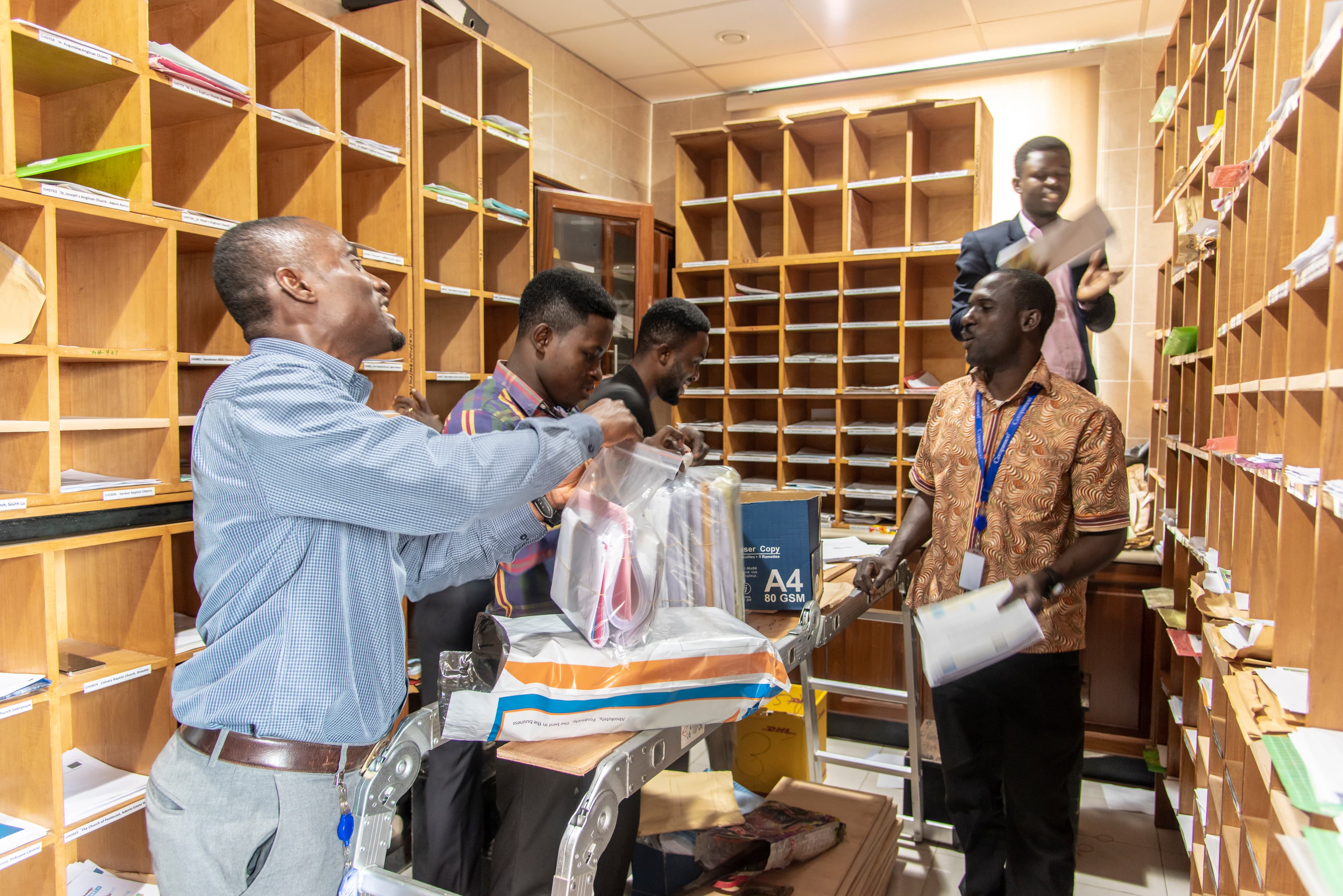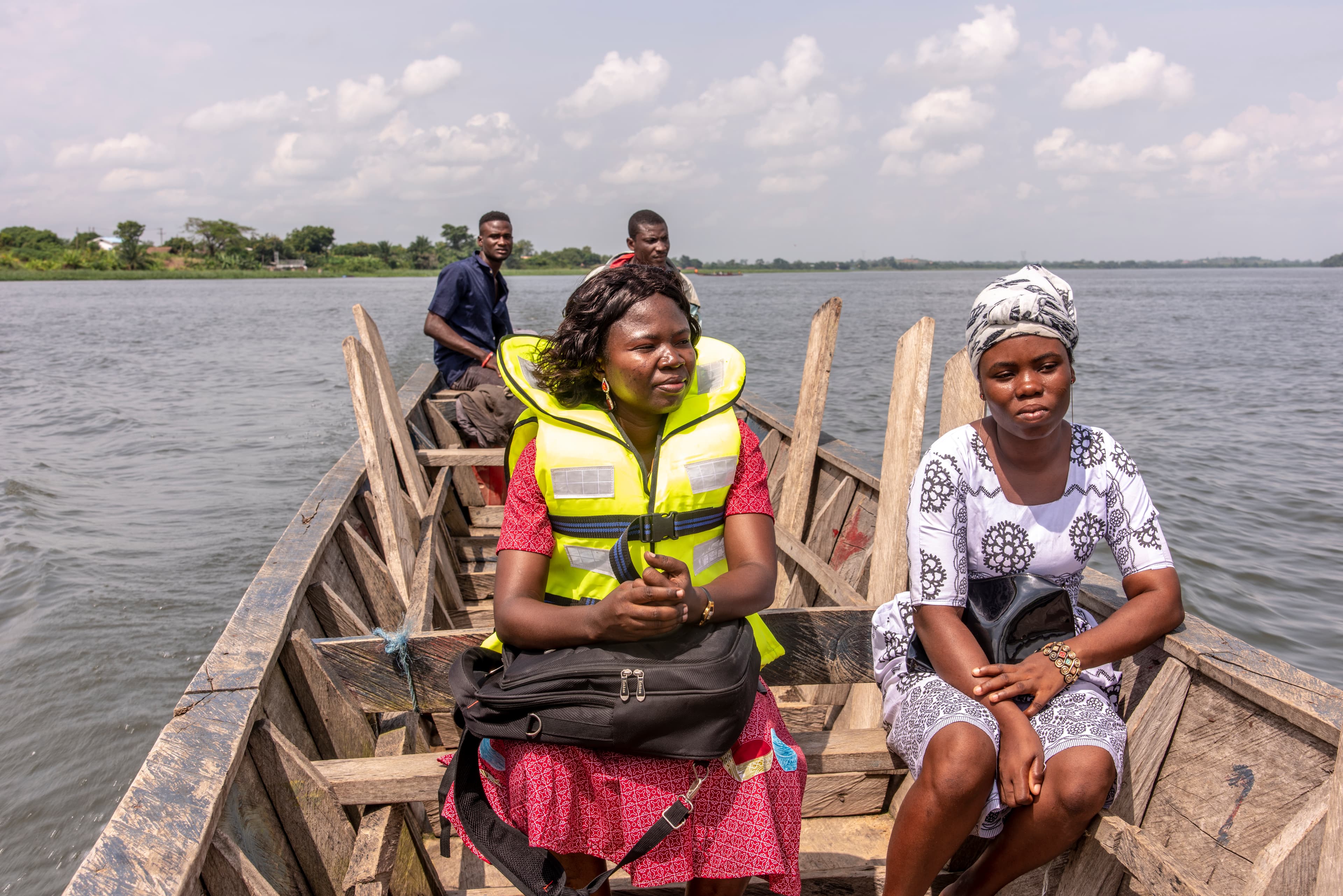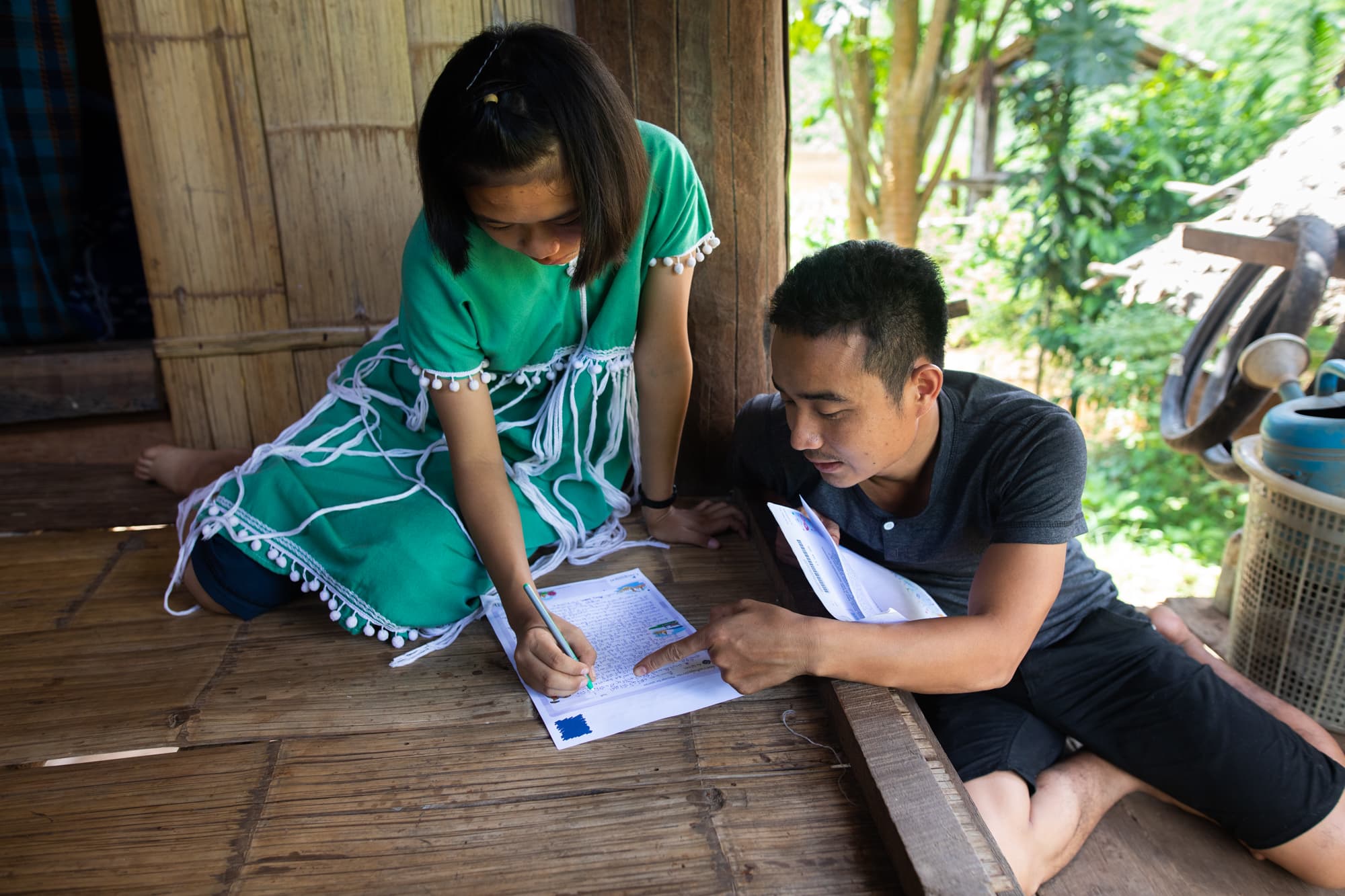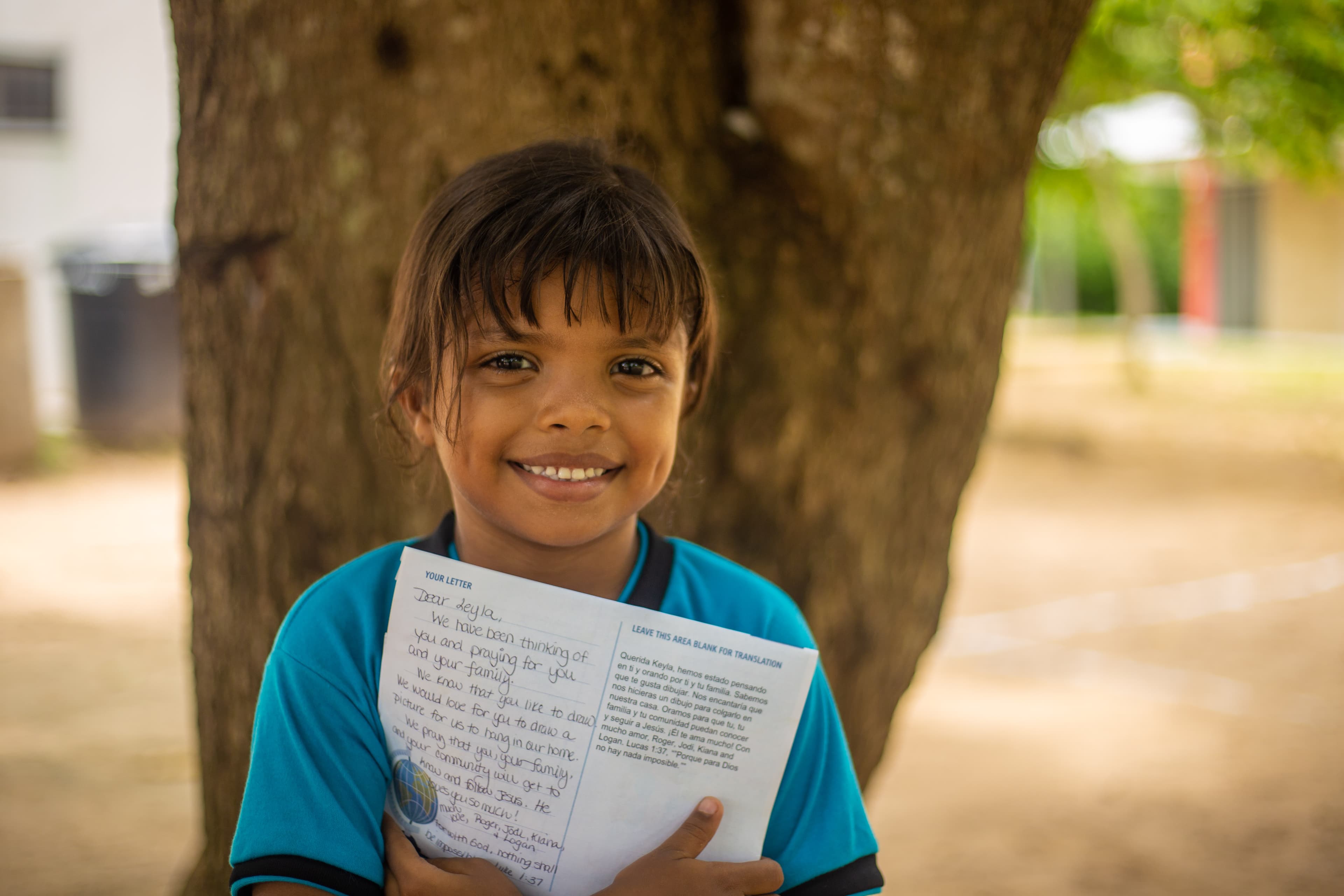In the United States, we don’t really think about it much because it’s so easy — you mail a letter or a package, and a few days later it arrives in the mailbox or on the doorstep of the person you sent it to. And when you order something online, it typically arrives in a couple of days — at most, a week or so later.
But mail and package delivery in low-income countries is quite a bit more complex. In most cases, there’s no next-day air to small, remote villages. And even if there were, because we take child protection so seriously, a series of checks and hand-offs needs to happen from the national Compassion office all the way down to your child’s local center — all before your sponsored child receives his or her letter.
In almost every case, your letter travels a great distance, preserved with great care, by a host of people who treat your written words as though they were precious gold. Because to the child you’re writing to — and even to entire communities — your letters bring more hope and wonder than you could possibly know.
Let’s step through the process of exchanging letters with your sponsored child, and hopefully you’ll have a more clear understanding of:
Just how important and uplifting your letters are.
The massive effort that Compassion in-country workers undertake (with great pleasure) to deliver your words of encouragement to your eager kiddos.
Step 1: Sending Letters to Compassion National Offices
This is the easiest part and most like what you’re probably used to. You write a letter to the child you sponsor and send it. Now, you can do that one of two ways:
You can send a hard copy letter via mail to Compassion USA where, in most cases, we scan your letter and digitally send it to specially trained staff in the national office.
Or …
If you write a letter via the Compassion digital letter writing platform, the digital message is sent directly to the national office in your sponsored child’s country.
Step 2: Letter Translation and Child-Protection Monitoring
Once the national office receives your letter, either electronically or via courier, someone from a small team of caring child advocates reads your letter. This may seem like an invasion of privacy, but they do this for very good reasons. The first reason is practical: Most children don’t speak English, so translators at each country’s national offices, like Betey from Ethiopia, translate your words into your sponsored child’s language.
"The thing that motivates me is knowing how important it is for sponsors and children to communicate. Kids should know what the sponsors really feel, and the sponsors should know how the kids feel about them. So, I do my best in translating whatever is in the letter," says Betey.
The second reason is to protect both your sponsored child and you. The staff looks for any instance of accidental overcommunication [https://www.compassion.com/for-sponsors/stories/what-to-avoid-in-letters-oversharing.htm], such as:
Personal email addresses.
Phone numbers.
Facebook and other social media accounts.
Inappropriate language.
Compassion works to prevent this type of information being exchanged between sponsors and children to avoid risky scenarios. For example, someone who knows a sponsored child might create a social account pretending to be the child so they can ask the sponsor for money or to threaten the child’s wellbeing if money isn’t provided.
Another reason letters are monitored is to make sure sponsors don’t inadvertently write something inappropriate or offensive to the child (it’s not common, but it can happen). Letters from sponsors are also checked to make sure there are no photos or content that would be inappropriate for a child to see. We're deeply dedicated to child protection, which is why we take this step so seriously.
READ: What to Avoid In Letter Writing: Cultural Insensitivity [https://www.compassion.com/for-sponsors/stories/what-to-avoid-in-letter-writing-cultural-insensitivity.htm]
Step 3: Obstacles In The Journey
After letters have been translated and reviewed, they’re labeled and sorted. Within each country, Compassion centers are clustered by region, with usually 12 to 14 church-based centers per cluster. Your letter is bound with other letters destined for centers within the same cluster. Then the letters are sent through Compassion staff or via private courier to a pickup and drop-off point within a reasonable distance from each center in the cluster.
This is where it gets really interesting, because dedicated workers from each center then make long, hard and sometimes dangerous journeys to these pickup and drop-off points.
Take Wichean in Thailand, for example. He travels every week nearly two hours by motorbike from the high mountains to the main road where the nearest pickup and drop-off point is. The journey is hard enough during the dry season, but when it rains, Wichean makes the trek on foot, navigating washed-out roads, mudslides and flooding. These conditions can be dangerous, but he’s honored and duty-bound to make the journey.
"What I do is not just one of my responsibilities, but it means so much to the children," says Wichean. "And I feel so much joy in doing it."
Step 4: ASSEMBLY, DELIVERY, COACHING and REVERSING THE PROCESS
Each Compassion center handles letter delivery a bit differently, but most centers make a big deal of letter delivery day.
It may seem a bit mundane to you and me, but in small communities like those in the Volta region of Ghana, it’s rare to receive mail at all, let alone letters from people halfway around the world. So when letters arrive, the center hosts an assembly where letters are handed out and the community celebrates as though they each received a letter of their own.
Esinam, a project director for one of the centers in the Volta region, says:
"When children get letters, the whole community hears about it and rejoices. For someone abroad to think about a child [here] and write to that child, it is a very big thing for them."
Writing letters is also part of the child development program curriculum. Letter writing teaches children how to form handwritten letters and how to properly structure sentences in their own language. It also helps children practice valuable communication skills. That’s why, in many cases, workers at Compassion centers help children write letters to their sponsors — whether they’ve received a letter from their sponsor or not — at least twice a year.
The process is then reversed. Letters are carried to pickup and drop-off points, mailed to the national offices, translated and then scanned and sent back to Compassion USA to be sent to you.
And that’s what happens when you send a letter to the child you sponsor.
I hope this gives you some insight into just how many people are involved in making sure your sponsored child receives your loving words of encouragement. Each one of them is honored to do it. And each one of them is also 100% dedicated to seeing your sponsored child reach his or her full potential in Christ. So if it’s been a while since you wrote to the child you sponsor, send a note of encouragement today to remind them you’re thinking of them!






